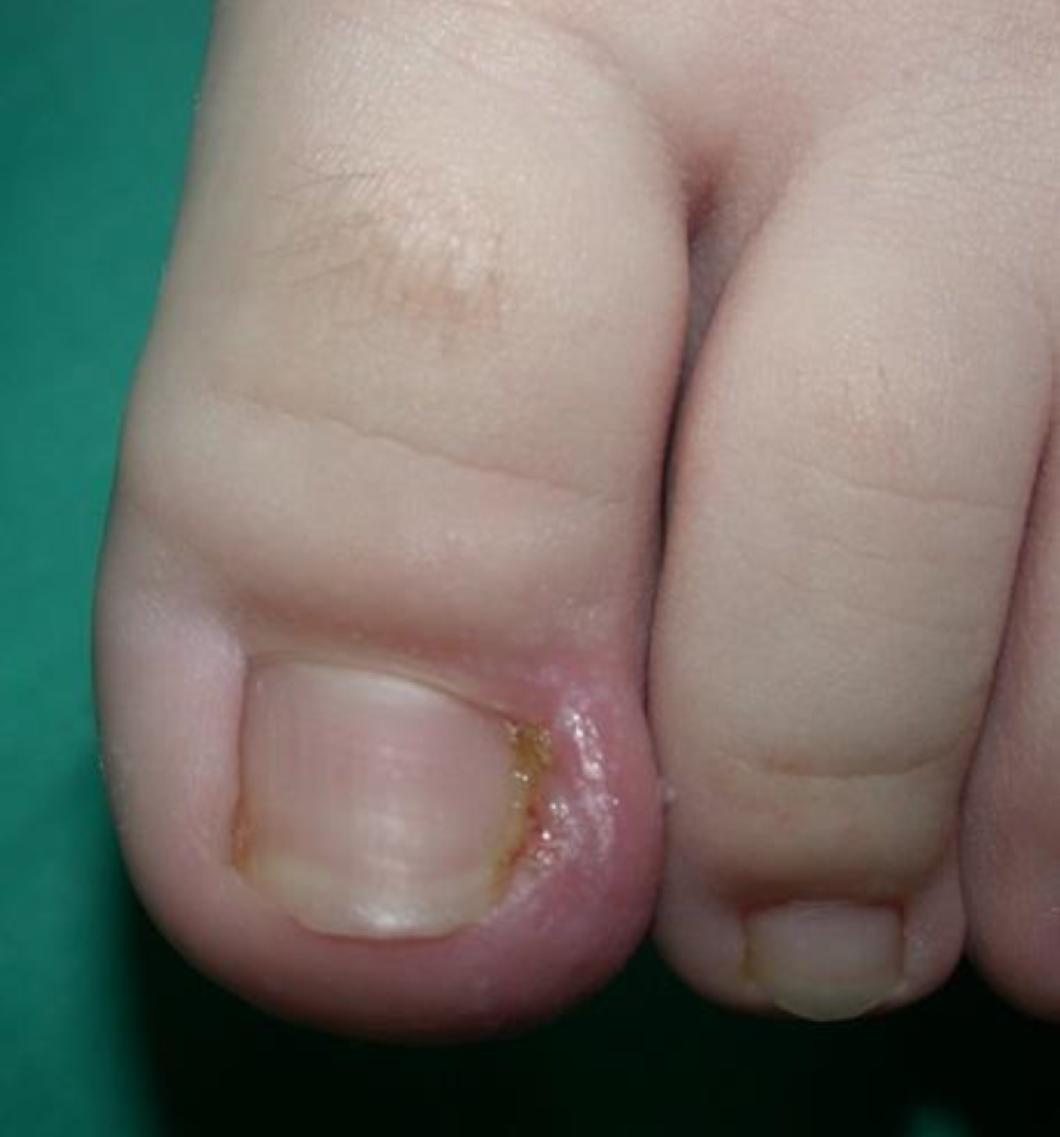What is an ingrown toenail?
An ingrown toenail (or Onychocryptosis) is where the side of the toenail cuts into the skin next to the nail. This can become painful as the skin may become inflamed and infected. It is often the big toe that is affected, though it can occur in the other toes. Ingrown toenails can occur at any age but commonly teenagers and young adults present with this problem. There are a number of causes for ingrown toenails, these include; narrow fitting footwear, poor nail cutting technique and a nail with naturally curved edges, rather than a flat nail.
What are the symptoms of an ingrown toenail?
The symptoms of an ingrown toenail may include pain, redness, swelling and sometimes pus, if infection is present.
What should I do if I have an ingrown toenail?
If you have an ingrown toenail then you should arrange a podiatry appointment as soon as possible.
What shouldn't I do if I have an ingrown toenail?
If you have an ingrown toenail then you should not ignore it in the hope it will go away. It will not get better on its own and it may even become infected and more painful.
Podiatry treatment for an ingrown toenail
Initial treatment of the ingrown nail:
Doctors often prescribe antibiotics to treat an infected ingrown toenail, but there is not a lot of point in treating the infection if the cause (the ingrown nail) remains. Sometimes antibiotics are used to help the infection clear once the nail has been removed.
A skilled podiatrist can easily remove the corner of the nail or nail spike that has penetrated the skin, often with little to no discomfort. If the ingrown nail is very painful, a local anaesthetic may be needed to do this. Unless the portion of nail that is causing the Ingrown toe nail is removed, the infection is likely to persist.
After the offending portion of nail is removed, all that is needed to clear up the infection is an antiseptic dressing for a few days, especially if you are healthy and have no healing problems. If you experience problems with wound healing, if your circulation is poor or if you have diabetes, antibiotics and/or a prolonged period of dressings may be required. In some, relatively rare, cases, pain may persist after the above treatment - this may be due to another spike of nail deeper down.
Ongoing treatment of the ingrown toenail:
Ingrown toe nails can often reoccur. The most common reason for an Ingrown toe nail to occur in the first place is the shape of the nail (curved down the side). With sound advice on self-treatment from your podiatrist, it may be possible to prevent it reoccurring. Regular podiatry treatment is sometimes needed to prevent the nail in growing again. Your podiatrist will discuss possible management options with you.
Surgical treatment of the Ingrown toe nail:
Minor surgical intervention is used if the ingrown nail is severe, if conservative care is difficult, or if the ingrown toenail does not respond well to conservative treatment. Nail surgery is a relatively simple procedure and is a permanent solution to the problem. There are a few different minor surgical procedures that can be utilised by a podiatrist to treat an ingrown toe nail. These can all be performed in the treatment room under a local anaesthetic.
The most common minor surgical procedure is the removal of a portion along the side of the nail. In the worst case scenario it may be necessary to remove the entire nail. At the base of the nail there are cells which cause the nail to grow. Unless something is done to remove these cells then the nail will grow back. A chemical is applied to destroy these cells and prevent nail re-growth. After the surgery you will need to keep your foot elevated for a few hours and rest. You can return to work or school the following day. It is advised that you refrain from sports and running for at least two weeks.




